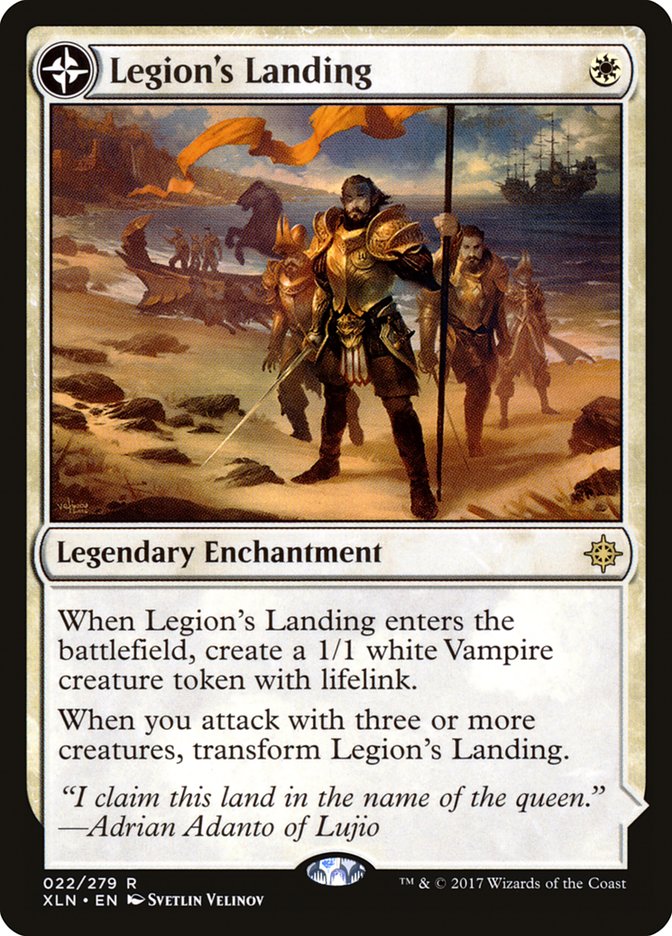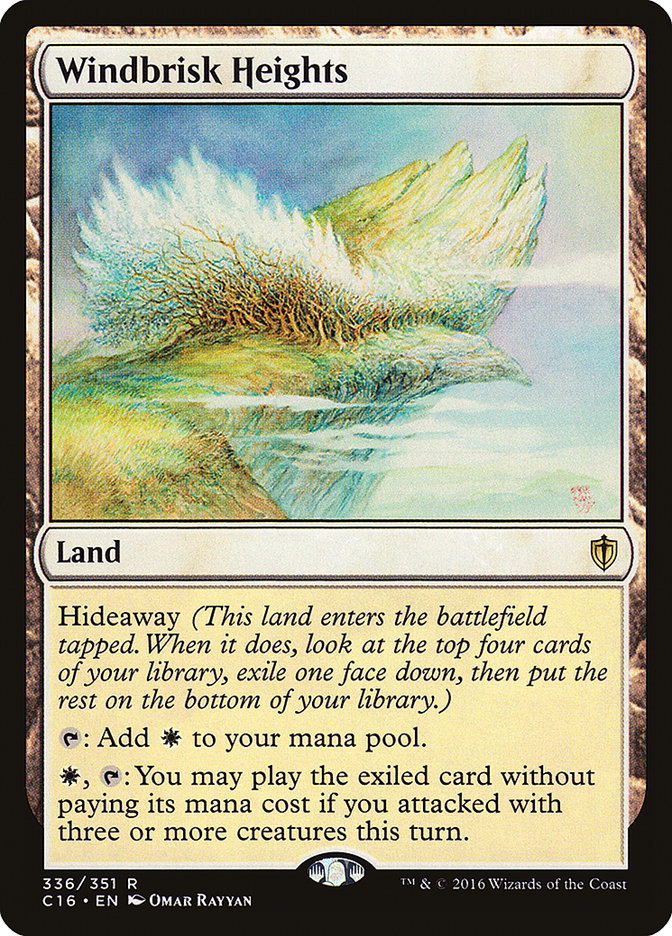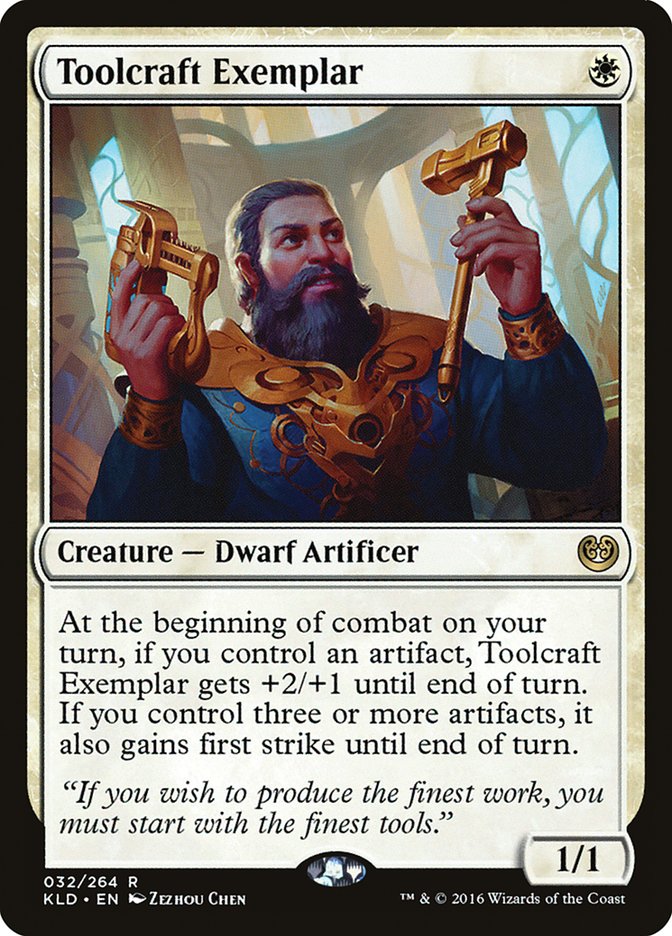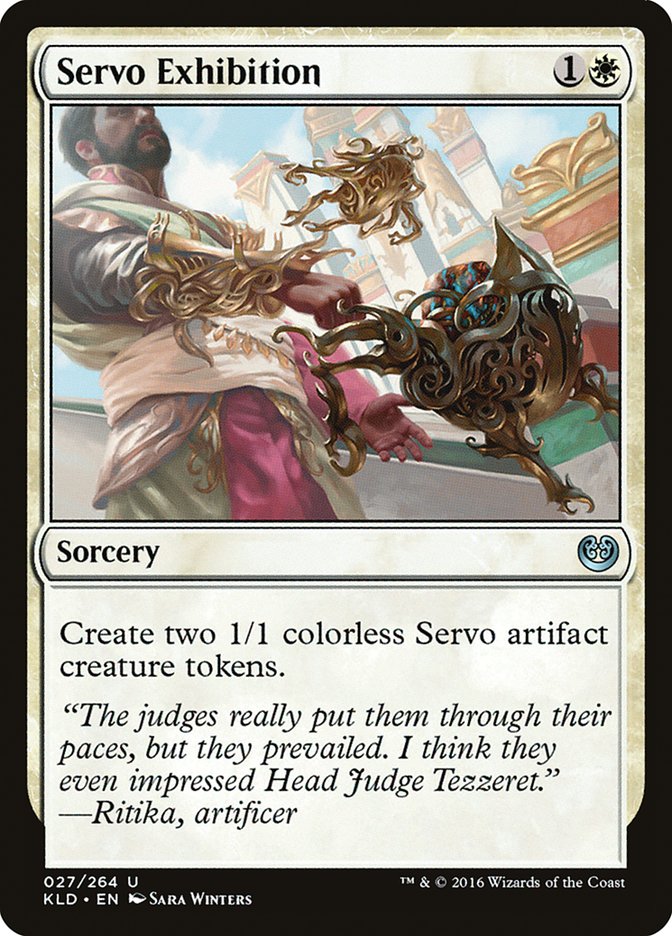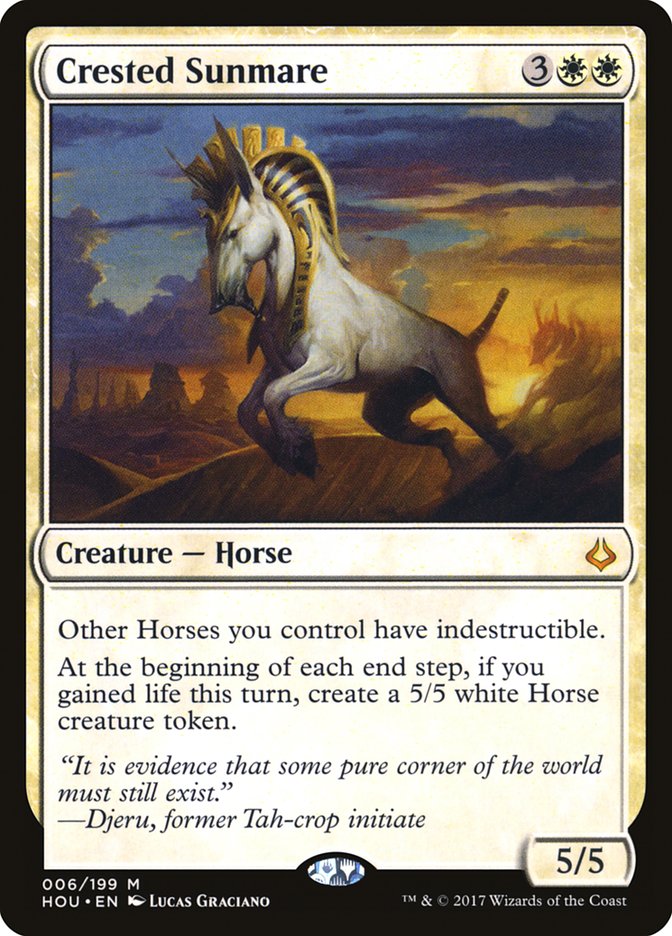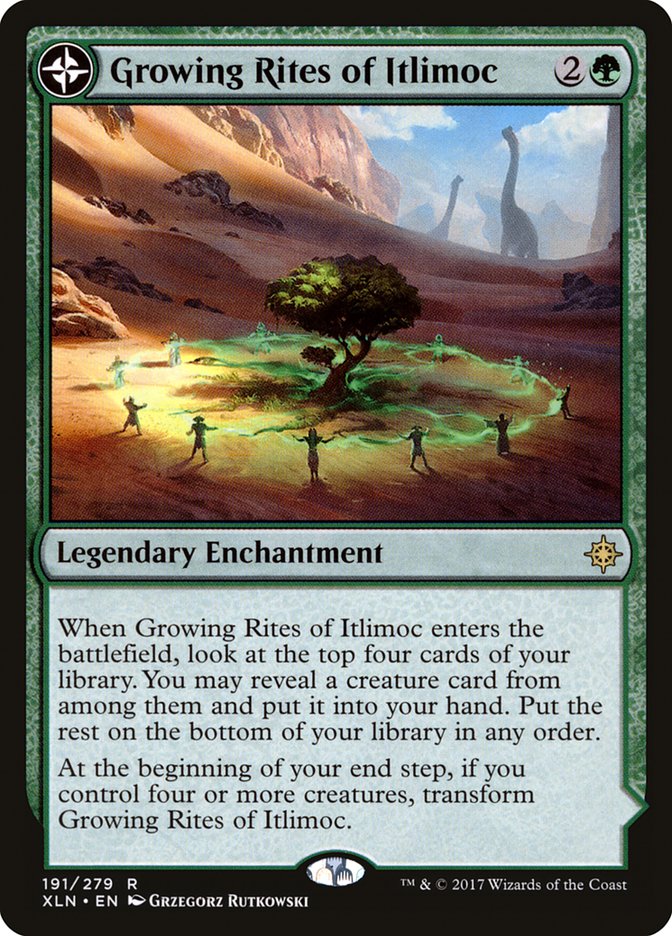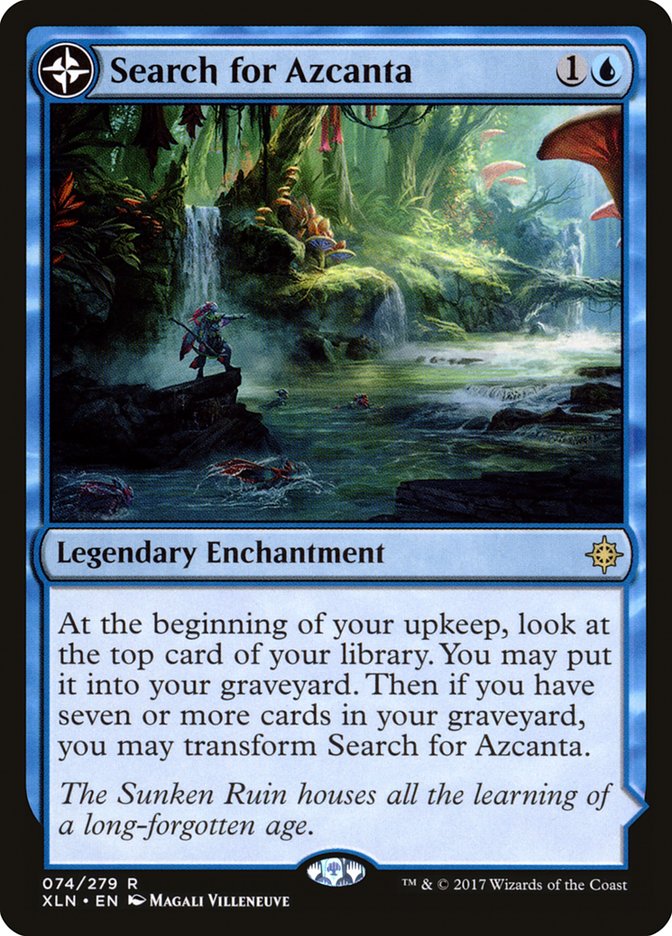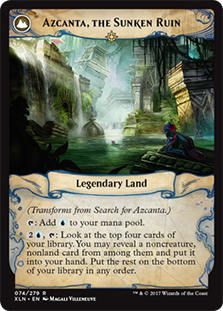Last week I wrote about how the double-faced cards in Ixalan excited me by doing a great job of capturing the flavor of exploring the new world, and as the previews continue to roll in, I’m only more excited about them. On Twitter last week, Sam Stoddard asked players what their favorite part of Ixalan was so far:
What's your favorite part of #MTGXLN so far? #WOTCstaff
— samstod (@samstod) September 6, 2017
I think they got it wrong. Dinosaurs? I mean, sure those are cool. Everyone loves Dinosaurs, and I think the colorful art on them makes the set look great, but at the end of the day are they really any different from “Beasts” in other sets?
It feels strange to me to think the answer is clearly “DFCs,” since they still feel so gimmicky, but these are just so well done. This is such a good implementation of the quest storyline told on a card, and the idea that a bunch of spells are going to be becoming extra lands in the mid-game just gives you a completely different idea about what an end-game of Magic might look like.
Okay, maybe I’m getting carried away–people probably aren’t going to flip two of these per game or anything, but I love the intersection of flavor and mechanics on these, and more recently, they’ve come all the way to the complete package by really pushing the power level.
Legion’s Landing may be among the best cards in the set. Its legendary status is a real drawback, but that’s a trivial issue with a card this powerful. I can imagine someone convincing themselves that attacking with three creatures is some kind of Magical Christmas Land scenario, but it’s really not. Windbrisk Heights is a fantastic card that people regularly trigger, and that’s a land that sets back your development of creatures rather than a one-mana 1/1 that makes it easier to get three creatures onto the battlefield.
Perhaps more importantly, you can cast this immediately before attacking with three creatures and flip it right away, while in order to activate Windbrisk Heights, you always had to let your opponent know that was your plan at least a turn in advance.
As someone who loves Doomed Travelers of all shapes and sizes, this may be the best ever: a 1/1 lifelinking creature that leaves behind an enchantment that threatens to become an extremely powerful land. If you cast this on turn 1 and Servo Exhibition on turn 2, your opponent is in a spot where they have to consider using removal on a 1/1 token that cost you at most half a card or let you have four mana on turn 3 and possibly the best token-making land ever for the long game. Even if they do use removal, you’ll probably just threaten to flip it again on the next turn.
And that’s only if they’re lucky enough that you had to cast this on turn 1 instead of Toolcraft Exemplar. If you cast Toolcraft Exemplar on turn 1 and Servo Exhibition on turn 2, you attack for three, and now you’re threatening to attack for five, but not only that, if you have Legion’s Landing in your hand, you get to cast it, attack, flip it immediately, and still have three more mana to use on your third turn. If they have the removal spell for your Toolcraft Exemplar, you might still flip Legion’s Landing if you have it and something like a Bomat Courier.
Beyond its power itself, this functions like an even more consistent Knight of the White Orchid in that it lets you build your deck differently. You can play fewer lands than you normally would, or a higher curve than you normally would, counting on this to function as extra lands in a reasonable timeframe.
The implications for super-low-curve decks are obvious: you can get away with playing eighteen to twenty lands in a deck that would usually play twenty or 22, but where this is even better is in midrange white aggressive decks like the deck I played at Worlds 2015:
Creatures (25)
- 4 Knight of the White Orchid
- 4 Soldier of the Pantheon
- 3 Brimaz, King of Oreskos
- 4 Wingmate Roc
- 1 Anafenza, Kin-Tree Spirit
- 2 Kytheon, Hero of Akros
- 4 Archangel of Tithes
- 3 Hangarback Walker
Lands (25)
Spells (10)

The largest benefactor of this card? Crested Sunmare. I think it’s very reasonable to expect to flip Legion’s Landing by your second main phase of turn 4, and it even gives you a lifelink creature to make sure you get to gain your one life for the turn when you cast Crested Sunmare.
If you don’t have faith in the Horse, you could always stick with Angel of Sanctions or Angel of Invention. Really, it’s going to be hard to build a Legion’s Landing deck where any of the three aren’t fantastic.
So what does a Legion’s Landing deck look like?
For now, I think opting for a super-low-curve approach is a mistake. This style of deck is generally looking to play a large number of cheap creatures and then something to make all of them bigger, but Standard is sorely lacking in reasonable ways to make them all bigger without Gideon, Ally of Zendikar; Reckless Bushwhacker; or Always Watching (which obviously wouldn’t work well with a lot of tokens anyway). There’s Trial of Solidarity, which is great, but I’d want something else and I’m not seeing it.
So where does this leave us?
Creatures (19)
- 2 Yahenni, Undying Partisan
- 4 Walking Ballista
- 4 Anointer Priest
- 4 Sacred Cat
- 2 Angel of Sanctions
- 3 Crested Sunmare
Lands (23)
Spells (18)
Sideboard

Without being able to duplicate Clues, I’m a little worried about this deck’s ability to keep up on raw card quantity. Scrying with Hidden Stockpile is nice, but sometimes you just need more total resources. It’s possible I’m underusing Arguel’s Blood Fast as a means of accomplishing this, but I haven’t historically been impressed by Greed effects.
As much as I love this kind of deck, I suspect that this doesn’t have what it needs as is; it’s just too easy to draw an extremely low-impact mix of cards.
Another obvious way to build the deck is to just build the best curve of cards that say Vampire in the type line. I’m not going to do that now because it seems like a waste of time with only half of a tribal set revealed.
I don’t want to focus too much on Modern here, but for what it’s worth, I do think this card is good in basically any reasonably wide white creature deck in Modern, like Soul Sisters, Death and Taxes, or W/B Tokens. I’m not saying you should definitely play four, or even one, but I do think it’s a Modern-power-level card.
The next legendary enchantment I want to discuss potentially plays well with Legion’s Landing, as both as you to control several creatures. Unfortunately, beyond that, they’re not really as synergistic as one might hope. Growing Rites of Itlimoc wants you to play a bunch of mana creatures and then use it to dig for a giant Craterhoof Behemoth-style finisher to cast, while Legion’s Landing is just trying to let your white aggro deck go a little bigger and pressure control decks in the mid-game.
So how do we merge these things? Ideally, we’d use Thraben Inspector and Cryptolith Rite. Failing that, we’d probably look to Elvish Visionary. Unfortunately, Standard doesn’t really look to offer us any of those, so we’re going to have to try a little harder.
First of all, I want to know what we’re doing with all this mana if we get there. Are we just casting a giant Walking Ballista? I’d hope we can do better. Dinosaurs? It’s probably Dinosaurs, isn’t it…
The problem here is that if we’re playing bunch of Dinosaurs, we want our cheap creatures to be cards like Servant of the Conduit, Otepec Huntmaster, Drover of the Mighty, or Channeler Initiate, which really aren’t good attackers.
So where does that leave us? I have bad news. I honestly don’t think these cards actually play well together. Beyond that, I doubt Growing Rites of Itlimoc actually plays well with Standard cards at the moment from what we’ve seen. I think there are just better ways of making mana without going as far out of your way due to a shortage of good one mana green creatures or Green cards that make several creatures that would be useful in this kind of strategy.
Now for the next card I think is incredibly good, Search for Azcanta.
This card seems unbelievable to me. It’s probably even better than Legion’s Landing. I imagine every blue control deck will start with two to four of these, four Opt, and four Hieroglyphic Illumination, and then take a serious look at Strategic Planning to turn this on faster. In this kind of deck, you don’t need to race to turn it on by turn 4, but you want to naturally expect to be able to flip it fairly consistently by around turn 6, I’d imagine.
This is basically the closest you can get to a finisher without actually functioning as one. It never directly kills the opponent, but once you have control, your opponent can pretty safely concede after you’ve used it two or three times to load up with an extra two to three counters or removal spells. What are they even hoping for at that point? That you just didn’t bother including any way to kill them?
Speaking of ways to kill them, the front side happens to be a great tool for enabling reanimator decks or, more simply, just making use of Hostile Desert. This card is so good at what it does that it likely puts cards like Thaumatic Compass or Treasure Map, which I discussed using as sources of inevitability, out of work before the first day, as it’s an easy replacement in the kind of U/B Control decks I discussed last week.
In light of Search for Azcanta and other recently previewed cards, I’d update my baseline U/B Control deck to something like this:
Creatures (4)
Planeswalkers (1)
Lands (25)
Spells (30)

I’m starting to wonder if not playing land destruction, even something like Violent Impact as a splash in the sideboard, is a mistake if control mirrors are coming down to various flipped lands.
Beyond that, the gameplan here is the same: trade things and eventually counter and exile all their threats using card advantage from a flipped land before killing them with The Scarab God. I added Nicol Bolas, God-Pharaoh because I wanted Evolving Wilds anyway to support Search for Azcanta and Hostile Desert, so it was easy to include a Mountain, and Nicol Bolas, God-Pharaoh offers a finisher that Search of Azcanta can find.
I’m a little worried that this deck might have too much air, but since it’s so cheap to filter through, it should be fairly safe.
I’m interested to see if red will complete this cycle or if it was determined (potentially understandably) that searching for a land was outside of red’s portion of the color pie.


